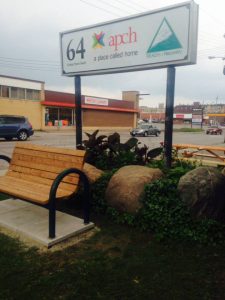Menu
Close
REACH for Recovery refocusing on mental health in Kawartha Lakes
Jun 12, 2020
As Ontarians prepare for a new normal, REACH for Recovery is refocusing to more actively support the mental health and well-being of those in the Kawartha Lakes community.
Previously known in the community as a drop-in centre where people could go to socialize, REACH (an acronym for Recovery, Empowerment, Advocacy, Community and Hope), is shifting gears to better reflect its original purpose: to be a mental health resource.
 REACH for Recovery is a Lindsay-based, peer support program of the Canadian Mental Health Association, Haliburton, Kawartha, Pine Ridge (C.M.H.A. H.K.P.R.) that provides services to people aged 16 and older, living with mental health concerns.
REACH for Recovery is a Lindsay-based, peer support program of the Canadian Mental Health Association, Haliburton, Kawartha, Pine Ridge (C.M.H.A. H.K.P.R.) that provides services to people aged 16 and older, living with mental health concerns.
Providing a therapeutic, safe environment promoting personal recovery through programming, REACH helps people gain the skills necessary to be a participating member of their home and community.
“Facilitated by peer staff, REACH groups give participants the chance to meet others in the community while working on improving and maintaining their wellness,” says Melody Dunn, Peer Support Worker.
In addition, recreational and artistic activities are offered as a creative and therapeutic outlet, such as Art Therapy, music, nature mood walks, physical wellness, and recreational games and sports.
Unfortunately, due to the current COVID-19 pandemic, REACH members have not been able to gather face-to-face for groups, activities or events. However, that hasn’t stopped them from connecting with one another.
“As we know that social connection is an important aspect of mental wellness, REACH is currently providing virtual groups and activities as well as one-to-one phone supports for its members,” says Dunn, noting they’re currently working on expanding those virtual opportunities.
They’ve also recently created a REACH Facebook Page as another method of connecting with members through live streams and the sharing of relevant resources and information.
“We are hoping that by creating additional platforms for people to connect with, we will be able to reach out further to individuals that may be in need of support during this unusual situation that we are currently facing. This will not only provide that individual with formal mental health supports, but will also connect them with other community members that may be facing similar struggles,” says Dunn.
Sommer Sanderson, another Peer Support Worker, says, even in this virtual age, REACH is bringing people together.
“It provides a sense of belonging a place for folks to learn, explore, be challenged and gain connection. By changing up everyday routines it may be a chance for those who are isolated or lack a sense of connection in other areas of their life an opportunity for this. It is a safe place to talk about mental health, which is still stigmatized in the general public spheres,” she says.
“Providing this space impacts people’s wellness and that further impact how people exist in the community. In that way, I strongly believe the mental health services, including the programs provided by REACH bring further health and wellness to the community as a whole.”
Previously, REACH existed in a drop-in casual format. Now it has more structure with scheduled formal programming. It provides a variety of groups including nature mood walks, art therapy, fitness-based groups, psychosocial educational groups.
The groups are plentiful and varied, Dunn says, noting there are educational and recreational options providing participants with the chance to spend time with other like-minded, goal-oriented individuals in a more community-based program.
 “We have been actively familiarizing ourselves and utilizing the resources that are available in the community, such as physical wellness centres, community parks and conversation areas, community facilitators as well as various volunteer opportunities,” says Dunn.
“We have been actively familiarizing ourselves and utilizing the resources that are available in the community, such as physical wellness centres, community parks and conversation areas, community facilitators as well as various volunteer opportunities,” says Dunn.
Furthermore, REACH is always eager to engage in and help out with other community events and fundraisers as they believe the more often their members participate in the community, the more effective they are at reducing the stigma surrounding mental health.
As for what makes REACH so valuable to its members, Dunn says it’s the peer support aspect that makes the biggest difference.
“Peer support is based on the principle that people who have life experiences in common have something to offer each other. This approach assumes people who have experienced a mental health concern or have a close relationship with someone who has experienced a mental health concern, can better understand others during their recovery,” says Dunn.
“I would have to say that many of the individuals that frequently attend the REACH centre are giving just as much as they are receiving from the program; they truly want to support the other members of the program, as well as the program itself, as best as they can. Watching those mutual supports naturally occur is such an incredible and inspiring aspect of this program.”
As Sanderson explains, REACH isn’t about sitting and being instructed. It’s much more than that.
“I think that REACH is a unique program which encourages participation and connection with peers through engaging programming,” she says.
“It is a place where individuals may feel a sense of belonging, they may express struggles and celebrate the wins as everyone strives for the person they are continually becoming in their journey of recovery and mental wellness. And that’s pretty special.”
